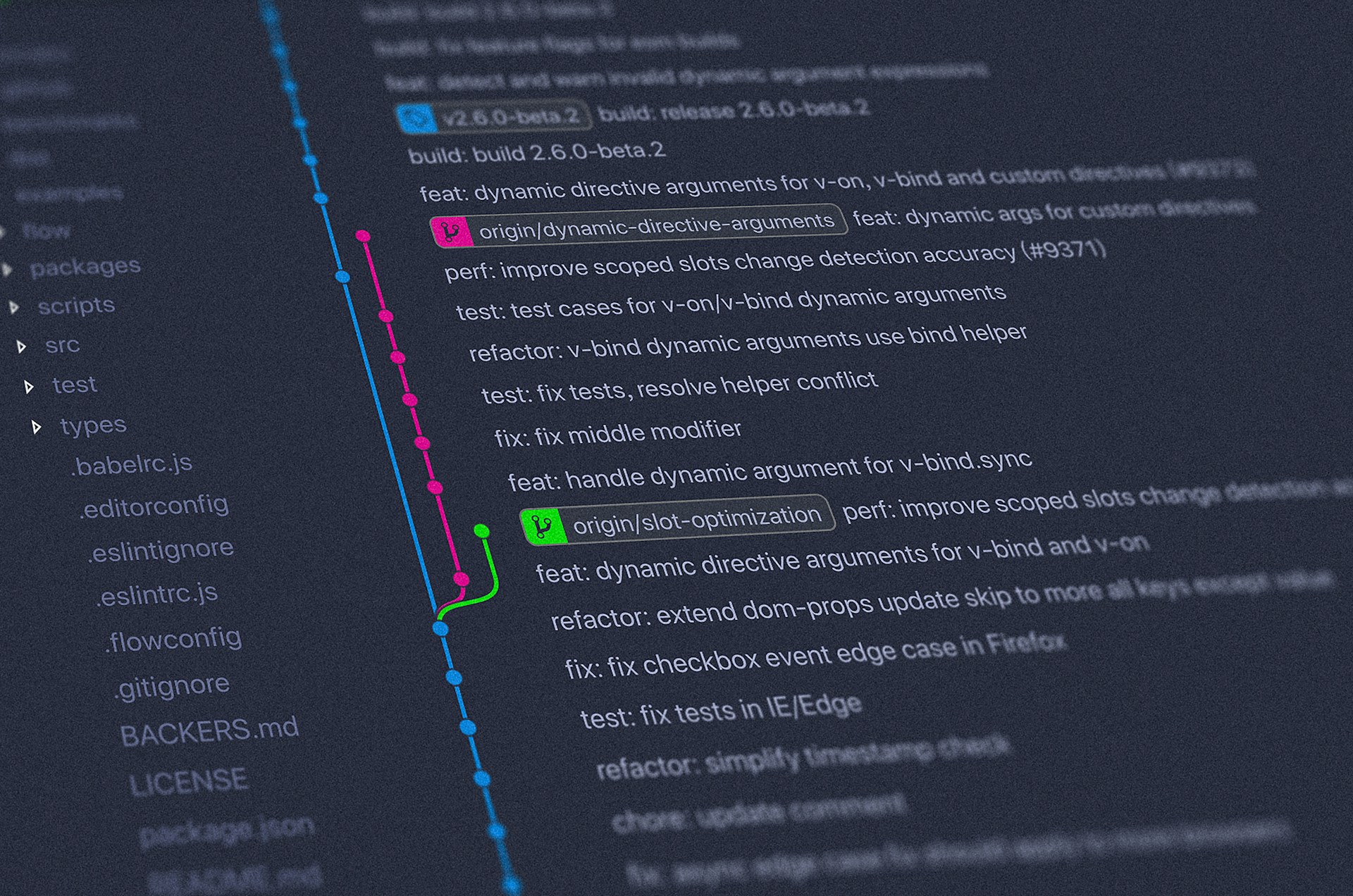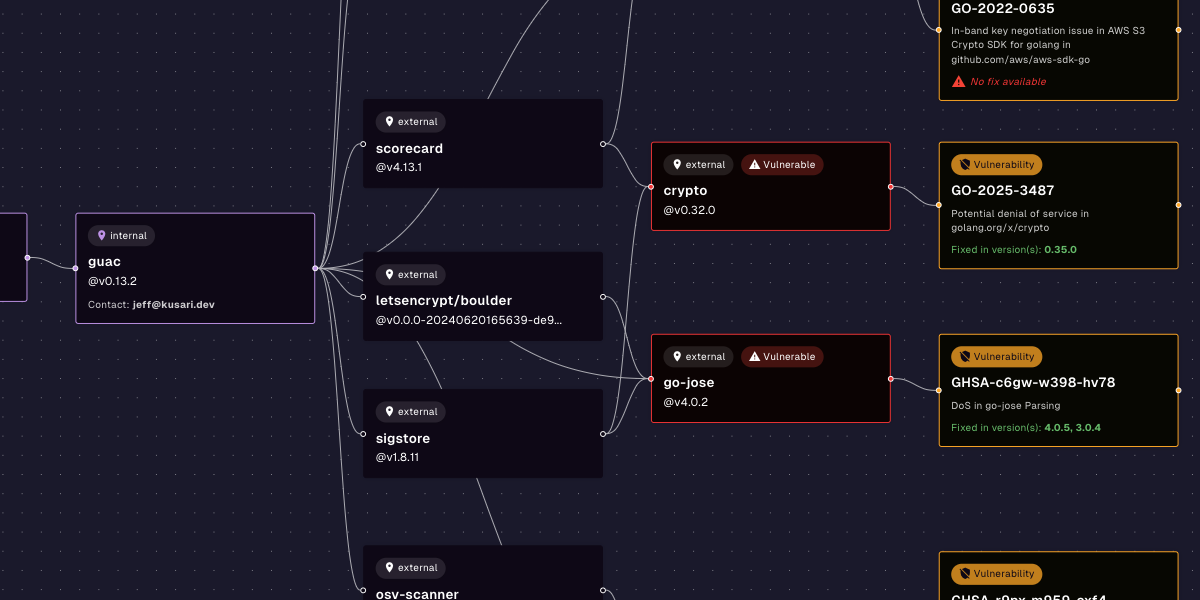Top 5 Pull Request Security Risks Every Maintainer Should Know
For maintainers responsible for project integrity, understanding these risks isn't optional. It's essential for protecting your software supply chain.
June 19, 2025

Pull request security is the front line, yet its position in software development can be overlooked. Pull requests (PRs) represent both opportunity and vulnerability - a gateway where valuable contributions enter your codebase, but also where significant security risks lurk.
For maintainers responsible for project integrity, understanding these risks isn't optional. It's essential for protecting your software supply chain.
Throughout my years working with development teams, I've witnessed firsthand how even sophisticated organizations can miss critical security flaws during the PR review process. These oversights create perfect entry points for malicious actors seeking to compromise software systems.
With software supply chain attacks surging 156% year-over-year and 96% of applications using open source software, the stakes have never been higher. Unlike traditional security tools that audit after the fact, modern solutions provide real-time analysis where developers already work, in pull requests, making secure development the path of least resistance.
Understanding Pull Request Security Fundamentals
Before diving into specific risks, we need to establish what makes pull request security so crucial to your overall security posture. Pull requests function as the primary mechanism for code integration in collaborative environments, making them natural targets for various attack vectors.
When a contributor submits a PR, they're essentially asking you to merge their code into your main codebase. This innocent-looking process contains inherent risks - the code could include vulnerabilities, either intentional or accidental, that compromise your application security.
The challenge intensifies in open-source projects where maintainers must evaluate contributions from developers they may not personally know. Even in corporate environments, malicious insiders or compromised developer accounts pose serious threats that can bypass traditional security controls.
Let's examine the five most dangerous pull request security risks every maintainer should be vigilant about.
Risk #1: Malicious Code Injection Through Pull Requests
Among pull request security concerns, code injection stands as perhaps the most direct threat. This attack involves deliberately introducing harmful code into a codebase through what appears to be a legitimate contribution.
Common Injection Techniques
- Backdoor implementation: Attackers add code that creates hidden access points to systems or data.
- Dependency confusion: Malicious packages with names similar to internal dependencies that get loaded instead of legitimate ones.
- Obfuscated malware: Harmful code deliberately obscured to evade detection during review.
These injection attacks can be surprisingly sophisticated. In one notable case, a maintainer discovered malicious code hidden within seemingly harmless whitespace changes - the malicious functions were only visible when viewing the raw diff at the character level.
Detection Strategies
Protecting against code injection requires multi-layered review processes:
- Implement automated scanning tools that check for known malicious patterns
- Review all code changes carefully, not just the obvious additions
- Pay special attention to PRs that modify security-critical components
- Question unusual or overly complex implementations that might hide malicious intent
The stakes are particularly high with code injection, as successful attacks can persist undetected for months or years after the initial compromise. This makes thorough PR review practices essential for maintaining codebase integrity.
Risk #2: Dependency Vulnerabilities in Pull Request Changes
Modern applications rely heavily on third-party dependencies, making them a significant attack vector within pull request security. When contributors add or update dependencies, they potentially introduce vulnerabilities that extend far beyond their own code changes.
The Hidden Dangers of Dependency Changes
Dependencies create security blind spots for several reasons:
- Transitive dependencies: A single package can bring dozens of nested dependencies, each with potential vulnerabilities
- Supply chain attacks: Legitimate packages compromised through their maintainers or distribution systems
- Outdated versions: Contributors may inadvertently specify versions with known vulnerabilities
The complexity of dependency networks makes them particularly challenging to secure. For example, even a simple PR adding a single NPM package might actually introduce 200+ transitive dependencies, each representing potential risk.
Modern security tools that analyze full dependency graphs, including transitive dependencies, can help identify these hidden risks across multiple ecosystems including Go, Node.js (NPM), Python (PyPI), Ruby (RubyGems), Rust (Cargo), Java (Maven), and .NET.
Mitigating Dependency Risks
Maintainers can protect against dependency-related threats by:
- Using dependency scanning tools that analyze both direct and transitive dependencies
- Implementing dependency lockfiles and verifying their integrity
- Requiring security justifications for new dependencies
- Setting clear policies on acceptable dependency sources and licenses
Remember that dependency vulnerabilities often represent the path of least resistance for attackers. While you're scrutinizing custom code, the real threat may lie in that innocuous-looking package.json change that slipped through review.
Risk #3: Secrets Exposure in Pull Request Submissions
One of the most common yet devastating pull request security failures involves the exposure of secrets - API keys, credentials, tokens, and other sensitive information that should never appear in code repositories.
Why Secrets Exposure Happens
Secret exposure typically occurs through:
- Developer oversight: Accidentally committing files containing hardcoded secrets
- Test code: Including "temporary" credentials that then become permanent
- Configuration files: Storing environment configurations with real credentials
- Malicious intent: Deliberately exposing secrets in ways difficult to detect
The danger extends beyond just the exposed secrets themselves. Even if you catch and remove exposed credentials, public repositories create a permanent record in their git history. Without proper repository cleaning (which comes with its own complexities), those secrets remain accessible to anyone who knows where to look.
Preventing and Addressing Secrets Exposure
Effective secrets management in the PR process requires:
- Pre-commit hooks that scan for potential secrets before they're submitted
- Automated scanning tools in CI/CD pipelines to catch secrets before merging
- Go/no-go recommendations for PRs with security issues
- Integration with GitHub workflows to flag insecure configurations
- Clear documentation for contributors about how to properly handle configuration
- Immediate rotation of any credentials accidentally exposed
This risk becomes particularly relevant when onboarding new contributors who might not understand your security practices. Establishing clear guidelines and automated checks creates safety nets that prevent costly mistakes.
Risk #4: Circumventing Access Controls via Pull Request Security Bypasses
Even with robust access controls in place, pull requests can sometimes become vehicles for privilege escalation and access control bypasses. These sophisticated attacks target the permissions model itself rather than introducing obviously malicious code.
Common Access Control Bypass Techniques
Attackers use several methods to manipulate access through PRs:
- Path traversal manipulation: Modifying files outside the intended scope through relative path references
- Build configuration changes: Altering CI/CD configurations to execute privileged commands
- Plugin/extension additions: Introducing components that have elevated permissions
- Hook manipulation: Modifying git hooks or other automation triggers to execute privileged code
These attacks are particularly dangerous because they often exploit legitimate features of your development ecosystem. A contributor might not even need direct admin access to achieve privileged execution through carefully crafted PR changes.
Securing Against Access Control Bypasses
To protect against these sophisticated attacks:
- Implement strict PR approval workflows for sensitive areas like build configurations
- Use branch protection rules to prevent direct modifications to critical branches
- Employ principle of least privilege for all automation systems
- Regularly audit permissions across your development ecosystem
- Consider implementing isolated build environments for PR validation
Access control bypasses represent some of the most sophisticated pull request security threats, as they exploit the trust relationships inherent in collaborative development. By understanding these attack patterns, maintainers can implement appropriate safeguards.
Risk #5: Social Engineering Through Strategic Pull Requests
Not all pull request security threats involve technical exploits. Sometimes, the most effective attacks leverage social engineering - manipulating maintainers' psychology and team dynamics to get malicious code approved.
Psychological Tactics Used in PR-Based Social Engineering
Attackers employ various psychological techniques:
- Trust building: Making several legitimate, helpful contributions before introducing malicious code
- Urgency exploitation: Framing changes as critical fixes that need immediate approval
- Complexity overwhelming: Submitting extremely large PRs where malicious code gets lost in the noise
- Review fatigue: Submitting multiple versions requiring review until reviewers become less thorough
- Authority impersonation: Creating accounts that appear to belong to known contributors or leaders
The effectiveness of these tactics stems from their exploitation of normal human behavior and team dynamics. Even security-conscious teams can fall victim when the social context seems trustworthy.
Defending Against Social Engineering in Pull Requests
Building resilience against social engineering requires both process and cultural changes:
- Establish maximum PR sizes to prevent "hiding" changes in massive contributions
- Implement multi-person review requirements for critical components
- Create clear guidelines on emergency PR processes
- Train reviewers to recognize social engineering tactics
- Consider contributor reputation systems while maintaining an open mind to new contributors
The human element remains the most challenging aspect of pull request security. By recognizing the psychological patterns attackers exploit, teams can develop review processes that compensate for natural human vulnerabilities.
Implementing a Comprehensive Pull Request Security Strategy
With an understanding of the top five pull request security risks, maintainers need a structured approach to securing their PR workflow. An effective strategy combines automated tools, process improvements, and team education.
Automation and Tooling
Leverage technology to create guardrails, not roadblocks:
- Static Application Security Testing (SAST): Automated code scanning for vulnerabilities
- Secret scanning: Tools that detect potential credentials or tokens
- Dependency vulnerability scanning: Automated checks for known vulnerabilities in packages
- Inline security reports: Annotated explanations with context-rich insights on every PR
- Conversational AI: Tailored suggestions that adapt to your codebase and team needs
- Risk-ranked insights: Prioritization based on CVSS (for severity), EPSS (for likelihood of exploit), and Known Exploited Vulnerabilities (KEV)
- Automated SBOM generation: Capture software bill of materials data automatically from source code
- Behavioral analysis: Systems that flag unusual commit patterns or contributor behaviors
While automation creates an essential safety net, tools alone can't solve all pull request security challenges. They must be paired with human oversight and strong processes.
Process Improvements
Enhance your workflow with security-focused processes:
- Implement mandatory security reviews for changes to sensitive components
- Create clear contribution guidelines emphasizing security expectations
- Establish tiered review requirements based on risk assessment
- Develop incident response plans for security issues discovered after merging
The right processes create structure without unnecessarily burdening contributors or maintainers. The goal is sustainable security that works with your development cadence, not against it.
Team Education
Ultimately, pull request security depends on knowledgeable humans:
- Train all maintainers on common attack patterns and detection techniques
- Create security champions within development teams
- Share case studies of real-world attacks to build awareness
- Conduct regular security review exercises and simulations
When team members understand both the "how" and "why" of security practices, they become active participants in security rather than just following procedures.
By layering these three elements - automation, process, and education - maintainers can create a robust defense against the various pull request security threats targeting their projects.
The Future of Pull Request Security Challenges
As development practices and attack techniques evolve, pull request security continues to face new challenges. Understanding emerging trends helps maintainers prepare for tomorrow's threats.
AI-Generated Code Concerns
The rise of AI code generation tools creates new security considerations:
- Detecting potentially harmful patterns in AI-suggested code
- Ensuring proper review of machine-generated contributions
- Managing potential intellectual property and licensing issues
- Addressing the "black box" nature of some AI-generated solutions
As AI becomes more integrated into development workflows, maintainers will need specialized tools and practices to ensure security isn't compromised.
Supply Chain Complexity
The software supply chain continues growing more complex:
- Increasing numbers of dependencies and transitive dependencies
- More sophisticated supply chain attacks targeting popular packages
- Growing difficulty in verifying the provenance of all code components
- Challenges in tracking vulnerability notifications across ecosystems
This complexity requires maintainers to adopt more sophisticated dependency management and verification strategies as part of their pull request security practices.
Evolving Regulatory Requirements
The regulatory landscape around software security is changing rapidly:
- New compliance requirements for development practices
- Increased emphasis on Software Bills of Materials (SBOMs)
- Growing liability concerns for security vulnerabilities
- Industry-specific regulations affecting development processes
Maintainers increasingly need to consider not just technical security but also compliance aspects of their PR review processes.
Staying ahead of these evolving challenges requires continuous learning and adaptation. The most successful teams treat pull request security as an ongoing journey rather than a fixed destination.
Security That Comes to You
Want to secure your pull requests without slowing down development? Kusari Inspector provides AI-powered security analysis directly in your PRs, catching secrets, vulnerable dependencies, malicious packages, and policy violations before they reach production.
Kusari Inspector brings security that comes to you and has your back - providing guardrails, not roadblocks. Install the GitHub application today and get 30 days free to see how security can come to you, immediately.
Ready to transform your PR security process? Install Kusari Inspector from GitHub and experience security that comes to you. Try it here --> Install GitHub App.
FAQs About Pull Request Security
What are the most important automated tools for securing pull requests?
The most valuable automated tools include SAST (Static Application Security Testing) scanners that analyze code for vulnerabilities, secret scanning tools that detect accidentally committed credentials, dependency vulnerability scanners that check for known issues in third-party packages, and integrity verification tools that validate the identity of contributors. Ideally, these should be integrated directly into your CI/CD pipeline to provide feedback before merging.
How can we balance security with developer productivity in our PR process?
Balance security and productivity by implementing tiered reviews based on risk assessment, automating routine security checks, providing clear security guidelines to contributors, creating pre-approved patterns for common tasks, and investing in developer security education. The goal should be making secure development the path of least resistance rather than an obstacle to progress.
What's the best way to handle discovered vulnerabilities in already-merged PRs?
When vulnerabilities are discovered in already-merged code, follow a structured process: assess the severity and potential impact, implement temporary mitigations if possible, develop and test a proper fix, prioritize the deployment of the fix based on risk, notify affected parties as appropriate, and conduct a retrospective to improve your PR security process. For high-severity issues, consider establishing a security response team that can act quickly.
Previous
No older posts
Next
No newer posts


















.webp)









.webp)























.png)
.png)




.png)
.png)
.png)
.png)
.png)
.png)
.png)



.png)









.jpg)





































